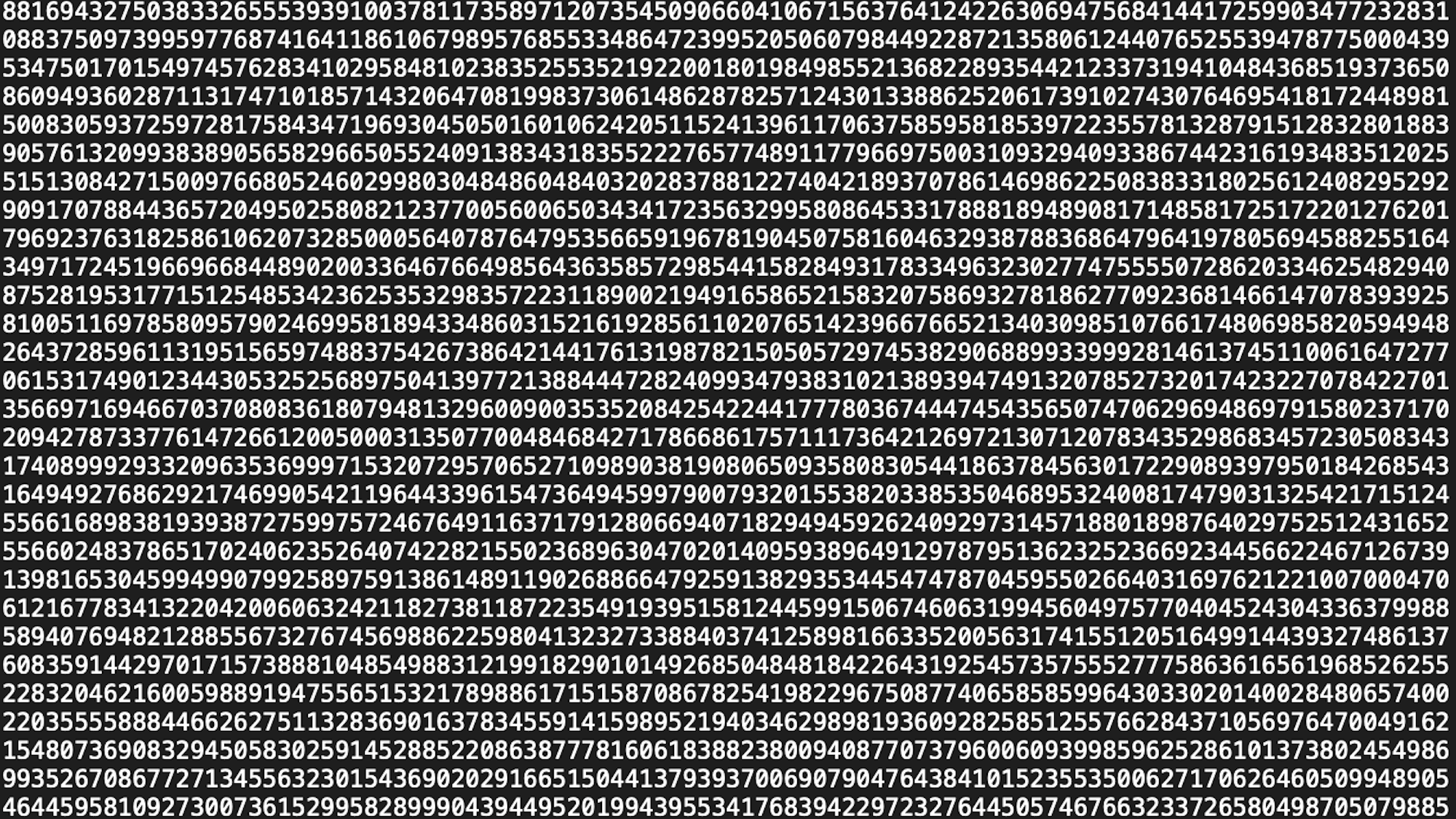It’s been nearly six years since math devotees discovered the last largest known prime number, but the bar has officially been raised by over 16 million digits. On October 21, the Great Internet Mersenne Prime Search (GIMPS), a global community project dedicated to finding these incomprehensibly huge numbers, confirmed the 52nd Mersenne prime number is (drumroll, please) 2136279841-1. To translate, that’s equivalent to multiplying the number 2 together 136,279,841 times, then subtracting 1. The latest mathematical figure stretches to include 41,024,320 digits—a number so gargantuan that the .txt file housing it takes up 41.8Mb. For reference, .txt file for Leo Tolstoy’s War and Peace (587,287 words) is a paltry 3.4 Mb.
Formed in 1999, GIMPS relies on an international network of volunteers who download specialized software that harnesses their computers’ unused programming capabilities to search for exceptionally large Mersenne prime numbers. Named after Marin Mersenne, the 17th-century French friar who first studied them, Mersenne primes are defined as 2n-1, where “n” is any integer. While these begin relatively simply with the number 3 (22-1), they quickly climb to giant numbers that surpass any single human mind’s mathematical skills. They become so difficult to calculate, in fact, that the newest example, officially designated M136279841, is just the 52nd known Mersenne prime number.
Announced on Tuesday, GIMPS explained that M136279841 was first suspected on October 11 by a 36-year-old former NVIDIA employee named Luke Durant using what’s known as Fermat probable prime test. After Durant notified GIMPS of his possible breakthrough, several other computers around the world conducted multiple Lucas-Lehmer primality tests to ensure M136279841’s prime-ness, leading to its official confirmation 10 days later.
Durant’s achievement also marks a major moment in the hunt for Mersenne prime numbers—it’s the first of its kind to be found through the use of graphics processing units (GPUs) instead of traditional central processing units (CPUs). GPUs have come to prominence in recent years in conjunction with the rise of machine learning, large language models, and artificial intelligence, all of which often rely on massive GPU networks to function. For 28 years, GIMPS volunteers relied on CPU power to use the organization’s original software. In 2017, however, a developer named Mihai Preda designed an open-source program called GpuOwl to continue the Mersenne prime research through these muc-improved machines.
[Related: How a FedEx employee discovered the world’s largest prime number.]
A single GPU isn’t likely to net a 41,024,320-digit number, however. Durant, for example, found M136279841 through a supercomputer cloud network he built using server GPUs throughout 24 datacenter regions in 17 countries. Such a large system isn’t cheap, either—The Washington Post reports the project cost Durant around $2 million since he started looking for the 52nd Mersenne number in October 2023.
As for the potential uses that come from M136279841—there technically aren’t many at the moment. In theory, such complicated and lengthy prime numbers may have their use in cryptographic algorithms for enhanced cybersecurity. GIMPS has long billed itself as dedicated to the search for the search’s sake, with GIMPS co-founder George Woltman previously describing it as “a good way to pass the time” and “entertainment for math nerds.”
In this case, however, Durant’s Mersenne prime number find may provide a very clear example of how GPU cloud supercomputers can be used to advance far more than just controversial AI projects. Despite their uses, even the most powerful generative AI models remain almost comically bad at math compared to other computational systems. Although they may change one day, as it stands, discoveries like M136279841 can continue to highlight human ingenuity, creativity, and curiosity—but apparently having a couple million dollars to fund such a passion doesn’t hurt, either.

